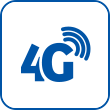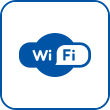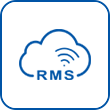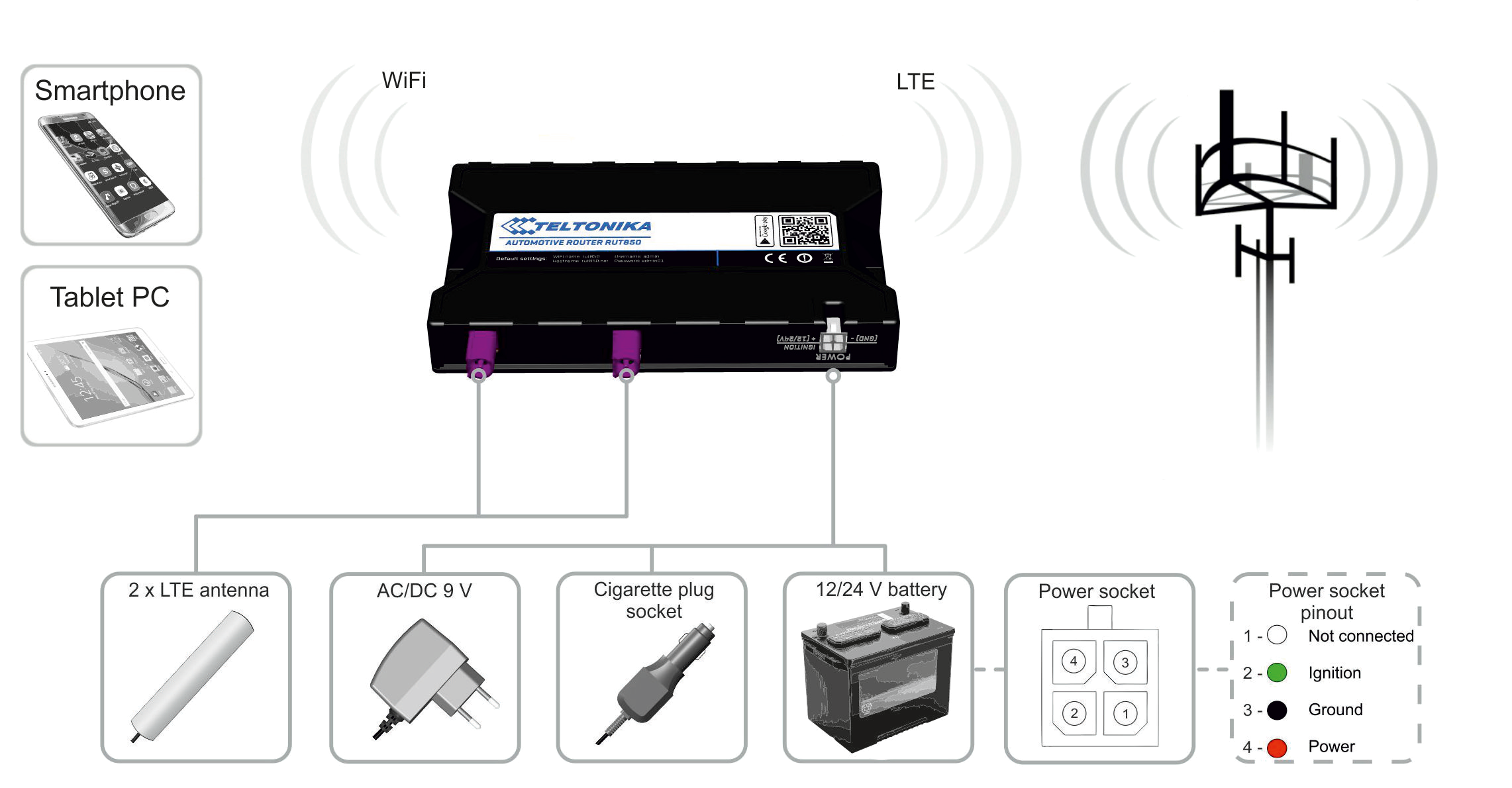
- Din varukorg är tom!
RUT850 is a compact and slim design LTE wireless router. It supports latest IEEE802.11n and IEEE802.11b/g WLAN standards and provides wireless transmitting and receiving rate up to 150 Mbps. LTE – up to 150 Mbps DL and 50 Mbps UL.
 |
LTE supportWhether it is a long family trip, a camping spot or a need to access a back-end office – RUT850 has you covered. This sleek automotive router supports high speed LTE CAT4, which provides speeds of up to 150Mbps for your leisure or business demand |
 |
Wireless networkWith support of latest IEEE802.11n and IEEE802.11b/g WLAN standards you can be sure, that full LTE CAT4 potential can be realized: no bottlenecks from LTE to WiFi. Connect multiple devices, watch movies, video streams, or connect to remote surveillance equipment with ease. |
 |
Power supplyRUT850 can be used either in light vehicles or busses, trucks and other heavy transport, which utilizes 24V battery. This is achieved by wide input voltage range and voltage surge protection – no need for additional surge protection equipment. Power supply socket connector has an Ignition digital input, which controls router’s sleep mode status. |
 |
Android appSet up your internet connectivity and be ready to go in minutes with just a few clicks from your smartphone. Manage and monitor router’s performance without physically connecting to the device. |
 |
RMS supportManage your routers fleet remotely. With full support of centralized Teltonika Remote Management System you will be able to access, control and monitor all of your routers within a single platform. This will help you make better decisions for future installments and best-use practices. |

Standard package contains
|
 |
| MOBILE | |
|---|---|
| Mobile module | 4G (LTE) – Cat 4 up to 150 Mbps, 3G – Up to 42 Mbps, 2G – Up to 236.8 kbps |
| Status | Signal strength (RSSI), SINR, RSRP, RSRQ, EC/IO, RSCP Bytes sent/received |
| SMS | SMS status, SMS configuration, send/read SMS via HTTP POST/GET, EMAIL to SMS (optional), SMS to EMAIL(optional), SMS to HTTP (optional), SMS to SMS (optional), scheduled SMS, SMS autoreply, SMPP (optional) |
| Black/White list | Black/White list |
| Multiple PDN (optional) | Possibility to use different PDNs for multiple network access and services |
| Band management | Band lock, Used band status display |
| WIRELESS | |
| Wireless mode | IEEE 802.11b/g/n, Access Point (AP), Station (STA) |
| WiFi | WPA2-Enterprise (with external/internal Radius server), WPA2-PSK, WPA-PSK, WEP, MAC Filter |
| WiFi security | WPA2-Enterprise - PEAP, TLS, TTLS, AES-CCMP, TKIP, Auto Cipher modes, Client separation |
| SSID | SSID stealth mode and access control based on MAC address |
| WiFi users | Up to 80 simultaneous connections |
| Hotspot | Captive portal (Hotspot), internal/external Radius server , built in customizable landing page |
| NETWORK | |
| Routing | Static routing, Dynamic routing (Optional - BGP, OSPF v2, RIP v1/v2) |
| Network protocols | TCP, UDP, IPv4, IPv6, ICMP, NTP, DNS, HTTP, HTTPS, FTP, SMTP, SSL v3, TLS, ARP, VRRP, PPP, PPPoE, UPNP, SSH, DHCP, Telnet, SMPP, MQTT (optional), SMNP, VoIP passthrough support |
| Connection monitoring | Ping Reboot, Periodic Reboot, LCP and ICMP for link inspection |
| Firewall | Port forward, traffic rules, custom rules |
| DHCP | Static and dynamic IP allocation, DHCP Relayd |
| QoS | Traffic priority queuing by source/destination, service, protocol or port, WMM, 802.11e |
| DDNS | Supported >25 service providers, others can be configured manually |
| Network backup | Mobile and WiFi WAN options, each of which can be used as backup, using automatic Failover |
| Load balancing (optional) | Balance your internet traffic over multiple WAN connections |
| NetSnapper (optional) | Mobile connection management, data compression VPN client (not available in standard FW) |
| SSHFS (optional) | Possibility to mount remote file system via SSH protocol (not available in standard FW) |
| SECURITY | |
| Authentication | Pre-shared key, digital certificates, X.509 certificates |
| Firewall | Pre-configured firewall rules can be enabled via web-ui, unlimited firewall configuration via CLI; DMZ; NAT; NAT-T |
| Attack prevention | DDOS prevention (SYN flood protection, SSH attack prevention, HTTP/HTTPS attack prevention), port scan prevention ( SYN-FIN, SYN-RST, X-mas, NULL flags, FIN scan attacks) |
| WiFi security | WPA2-Enterprise – PEAP, EAP-TLS, TLS, TTLS. AES-CCMP, TKIP, Auto Cipher modes. Client separation |
| Mobile quota control | Set up custom data limits for the SIM card |
| WEB filter | Blacklist for blocking out unwanted websites, whitelist for specifying allowed sites only |
| Access control | Flexible access control of TCP, UDP, ICMP packets, MAC address filter |
| VPN | |
| OpenVPN | Multiple clients and server can be running simultaneously, 12 encryption methods |
| OpenVPN Encryption | DES-CBC, RC2-CBC, DES-EDE-CBC, DES-EDE3-CBC, DESX-CBC, BF-CBC, RC2-40-CBC, CAST5-CBC, RC2-64-CBC, AES-128-CBC, AES-192-CBC, AES-256-CBC |
| IPsec (optional) | IKEv1, IKEv2, supports up to 4 x VPN IPsec tunnels (instances), with 5 encryption methods (DES, 3DES, AES128, AES192, AES256) |
| GRE (optional) | GRE tunnel |
| PPTP, L2TP (optional) | Client/Server services can run simultaneously |
| MONITORING & MANAGEMENT | |
| WEB UI | HTTP/HTTPS, status, configuration, FW update, CLI ,troubleshoot, event log, system log, kernel log |
| FOTA | Firmware update from sever, automatic notification |
| SSH | SSH (v1, v2) |
| SMS | SMS status, SMS configuration, send/read SMS via HTTP POST/GET |
| TR-069 | OpenACS, EasyCwmp, ACSLite, tGem, LibreACS, GenieACS, FreeACS, LibCWMP, Friendly tech, AVsystems |
| MQTT (optional) | MQTT Broker, MQTT publisher |
| SNMP (optional) | SNMP (v1, v2, v3), SNMP trap |
| JSON-RPC | Management API over HTTP/HTTPS |
| RMS | Teltonika Remote Management System (RMS) |
| SYSTEM CHARACTERISTICS | |
| CPU | Atheros Hornet, MIPS 74Kc, 550 MHz |
| RAM | 64 MB, DDR2 |
| FLASH memory | 16 MB SPI Flash |
| FIRMWARE / CONFIGURATION | |
| WEB UI | Update FW from file, check FW on server, configuration profiles, configuration backup, restore point |
| FOTA | Update FW/configuration from server |
| RMS | Update FW/configuration for multiple devices |
| Keep settings | Update FW without losing current configuration |
| FIRMWARE CUSTOMIZATION | |
| Operating system | RutOS (OpenWrt based Linux OS) |
| Supported languages | Busybox shell, Lua, C, C++ |
| Development tools | GPL package with built environment provided |
| LOCATION TRACKING | |
| GNSS | GPS, GLONASS, BeiDou, Galileo and QZSS |
| Coordinates | GNSS coordinates via WebUI, SMS, TAVL, RMS |
| NMEA | NMEA 0183 |
| Server software | supported server software TAVL, RMS |
| Mobile Network Geolocation | Location without using GPS, get approximate location based on mobile tower on RMS |
| Startup | Hot start < 2.5 s, Warm start < 26 s, Cold start < 35 s |
| Tracking | 55 simultaneous satellites channels |
| Sensitivity | -157 dBM |
| Accuracy | < 1.5 m |
| Geofencing | Configurable multiple geofence zones |
| POWER | |
| Connector | 4 pin DC power socket |
| Input voltage range | 9 – 30 VDC (4 pin industrial socket), reverse polarity protection, overvoltage protection up to 60 VDC, surge protection >66 VDC 10us max |
| Power consumption | < 5W |
| PHYSICAL INTERFACES (PORTS, LEDS, ANTENNAS, BUTTONS, SIM) | |
| Status LEDs | 3 x connection type status LEDs, 1 x WiFi status LED, 5 x connection strength LEDs, 1 x Power LED |
| SIM | 1 x SIM slots (Mini SIM – 2FF, 2st form factor), 1.8 V/3 V, external SIM holder |
| Power | 4 pin DC connector |
| Antennas | 2 x FAKRA connectors for LTE, 1 x FAKRA connector for GNSS |
| Reset | Reset/restore to default button |
| PHYSICAL SPECIFICATION | |
| Casing material | Plastic housing, plastic panels |
| Dimensions | 131 mm x 79 mm x 18 mm (H x W x D) |
| Weight | 115 g |
| OPERATING ENVIRONMENT | |
| Operating temperature | -40 °C to 75 °C |
| Operating humidity | 10% to 90% non-condensing |
| Ingress Protection Rating | IP30 |
| MTBF | 290000 h |
| REGULATORY & TYPE APPROVALS | |
| Regulatory | CE/RED, EAC, RoHS, WEEE |
| Operator | AT&T (planned), Verizon (planned) |
| Vehicle | ECE R10 (E-mark) |
| EMI IMMUNITY | |
| Standards | Draft EN 303 446-1 V1.1.0 |
| ESD | EN61000-4-2:2009 |
| RS | EN 61000-4-3:2006, A1:2008 and A2:2010 |
| EFT | EN 61000-4-4:2004 |
| CS | EN 61000-4-6:2009 |
| RF | |
| Standards | EN 300 328 V2.1.1, EN 301 511 V12.5.1, EN 301 908-1 V11.1.1, EN 301 908-2 V11.1.1, EN 301 908-13 V11.1.1, EN 303 413 V1.1.0 |
| SAFETY | |
| Standards | IEC 60950-1:2005 (Second Edition) + Am 1:2009 + Am 2:2013 EN 50665:2017, EN 62311:2008 |
| MOBILE | |
|---|---|
| Mobile module | 4G (LTE) – Cat 4 up to 150 Mbps, 3G – Up to 42 Mbps, 2G – Up to 236.8 kbps |
| Status | Signal strength (RSSI), SINR, RSRP, RSRQ, EC/IO, RSCP Bytes sent/received |
| SMS | SMS status, SMS configuration, send/read SMS via HTTP POST/GET, EMAIL to SMS (optional), SMS to EMAIL(optional), SMS to HTTP (optional), SMS to SMS (optional), scheduled SMS, SMS autoreply, SMPP (optional) |
| Black/White list | Black/White list |
| Multiple PDN (optional) | Possibility to use different PDNs for multiple network access and services |
| Band management | Band lock, Used band status display |
| WIRELESS | |
| Wireless mode | IEEE 802.11b/g/n, Access Point (AP), Station (STA) |
| WiFi | WPA2-Enterprise (with external/internal Radius server), WPA2-PSK, WPA-PSK, WEP, MAC Filter |
| WiFi security | WPA2-Enterprise - PEAP, TLS, TTLS, AES-CCMP, TKIP, Auto Cipher modes, Client separation |
| SSID | SSID stealth mode and access control based on MAC address |
| WiFi users | Up to 80 simultaneous connections |
| Hotspot | Captive portal (Hotspot), internal/external Radius server , built in customizable landing page |
| NETWORK | |
| Routing | Static routing, Dynamic routing (Optional - BGP, OSPF v2, RIP v1/v2) |
| Network protocols | TCP, UDP, IPv4, IPv6, ICMP, NTP, DNS, HTTP, HTTPS, FTP, SMTP, SSL v3, TLS, ARP, VRRP, PPP, PPPoE, UPNP, SSH, DHCP, Telnet, SMPP, MQTT (optional), SMNP, VoIP passthrough support |
| Connection monitoring | Ping Reboot, Periodic Reboot, LCP and ICMP for link inspection |
| Firewall | Port forward, traffic rules, custom rules |
| DHCP | Static and dynamic IP allocation, DHCP Relayd |
| QoS | Traffic priority queuing by source/destination, service, protocol or port, WMM, 802.11e |
| DDNS | Supported >25 service providers, others can be configured manually |
| Network backup | Mobile and WiFi WAN options, each of which can be used as backup, using automatic Failover |
| Load balancing (optional) | Balance your internet traffic over multiple WAN connections |
| NetSnapper (optional) | Mobile connection management, data compression VPN client (not available in standard FW) |
| SSHFS (optional) | Possibility to mount remote file system via SSH protocol (not available in standard FW) |
| SECURITY | |
| Authentication | Pre-shared key, digital certificates, X.509 certificates |
| Firewall | Pre-configured firewall rules can be enabled via web-ui, unlimited firewall configuration via CLI; DMZ; NAT; NAT-T |
| Attack prevention | DDOS prevention (SYN flood protection, SSH attack prevention, HTTP/HTTPS attack prevention), port scan prevention ( SYN-FIN, SYN-RST, X-mas, NULL flags, FIN scan attacks) |
| WiFi security | WPA2-Enterprise – PEAP, EAP-TLS, TLS, TTLS. AES-CCMP, TKIP, Auto Cipher modes. Client separation |
| Mobile quota control | Set up custom data limits for the SIM card |
| WEB filter | Blacklist for blocking out unwanted websites, whitelist for specifying allowed sites only |
| Access control | Flexible access control of TCP, UDP, ICMP packets, MAC address filter |
| VPN | |
| OpenVPN | Multiple clients and server can be running simultaneously, 12 encryption methods |
| OpenVPN Encryption | DES-CBC, RC2-CBC, DES-EDE-CBC, DES-EDE3-CBC, DESX-CBC, BF-CBC, RC2-40-CBC, CAST5-CBC, RC2-64-CBC, AES-128-CBC, AES-192-CBC, AES-256-CBC |
| IPsec (optional) | IKEv1, IKEv2, supports up to 4 x VPN IPsec tunnels (instances), with 5 encryption methods (DES, 3DES, AES128, AES192, AES256) |
| GRE (optional) | GRE tunnel |
| PPTP, L2TP (optional) | Client/Server services can run simultaneously |
| MONITORING & MANAGEMENT | |
| WEB UI | HTTP/HTTPS, status, configuration, FW update, CLI ,troubleshoot, event log, system log, kernel log |
| FOTA | Firmware update from sever, automatic notification |
| SSH | SSH (v1, v2) |
| SMS | SMS status, SMS configuration, send/read SMS via HTTP POST/GET |
| TR-069 | OpenACS, EasyCwmp, ACSLite, tGem, LibreACS, GenieACS, FreeACS, LibCWMP, Friendly tech, AVsystems |
| MQTT (optional) | MQTT Broker, MQTT publisher |
| SNMP (optional) | SNMP (v1, v2, v3), SNMP trap |
| JSON-RPC | Management API over HTTP/HTTPS |
| RMS | Teltonika Remote Management System (RMS) |
| SYSTEM CHARACTERISTICS | |
| CPU | Atheros Hornet, MIPS 74Kc, 550 MHz |
| RAM | 64 MB, DDR2 |
| FLASH memory | 16 MB SPI Flash |
| FIRMWARE / CONFIGURATION | |
| WEB UI | Update FW from file, check FW on server, configuration profiles, configuration backup, restore point |
| FOTA | Update FW/configuration from server |
| RMS | Update FW/configuration for multiple devices |
| Keep settings | Update FW without losing current configuration |
| FIRMWARE CUSTOMIZATION | |
| Operating system | RutOS (OpenWrt based Linux OS) |
| Supported languages | Busybox shell, Lua, C, C++ |
| Development tools | GPL package with built environment provided |
| LOCATION TRACKING | |
| GNSS | GPS, GLONASS, BeiDou, Galileo and QZSS |
| Coordinates | GNSS coordinates via WebUI, SMS, TAVL, RMS |
| NMEA | NMEA 0183 |
| Server software | supported server software TAVL, RMS |
| Mobile Network Geolocation | Location without using GPS, get approximate location based on mobile tower on RMS |
| Startup | Hot start < 2.5 s, Warm start < 26 s, Cold start < 35 s |
| Tracking | 55 simultaneous satellites channels |
| Sensitivity | -157 dBM |
| Accuracy | < 1.5 m |
| Geofencing | Configurable multiple geofence zones |
| POWER | |
| Connector | 4 pin DC power socket |
| Input voltage range | 9 – 30 VDC (4 pin industrial socket), reverse polarity protection, overvoltage protection up to 60 VDC, surge protection >66 VDC 10us max |
| Power consumption | < 5W |
| PHYSICAL INTERFACES (PORTS, LEDS, ANTENNAS, BUTTONS, SIM) | |
| Status LEDs | 3 x connection type status LEDs, 1 x WiFi status LED, 5 x connection strength LEDs, 1 x Power LED |
| SIM | 1 x SIM slots (Mini SIM – 2FF, 2st form factor), 1.8 V/3 V, external SIM holder |
| Power | 4 pin DC connector |
| Antennas | 2 x FAKRA connectors for LTE, 1 x FAKRA connector for GNSS |
| Reset | Reset/restore to default button |
| PHYSICAL SPECIFICATION | |
| Casing material | Plastic housing, plastic panels |
| Dimensions | 131 mm x 79 mm x 18 mm (H x W x D) |
| Weight | 115 g |
| OPERATING ENVIRONMENT | |
| Operating temperature | -40 °C to 75 °C |
| Operating humidity | 10% to 90% non-condensing |
| Ingress Protection Rating | IP30 |
| MTBF | 290000 h |
| REGULATORY & TYPE APPROVALS | |
| Regulatory | CE/RED, EAC, RoHS, WEEE |
| Operator | AT&T (planned), Verizon (planned) |
| Vehicle | ECE R10 (E-mark) |
| EMI IMMUNITY | |
| Standards | Draft EN 303 446-1 V1.1.0 |
| ESD | EN61000-4-2:2009 |
| RS | EN 61000-4-3:2006, A1:2008 and A2:2010 |
| EFT | EN 61000-4-4:2004 |
| CS | EN 61000-4-6:2009 |
| RF | |
| Standards | EN 300 328 V2.1.1, EN 301 511 V12.5.1, EN 301 908-1 V11.1.1, EN 301 908-2 V11.1.1, EN 301 908-13 V11.1.1, EN 303 413 V1.1.0 |
| SAFETY | |
| Standards | IEC 60950-1:2005 (Second Edition) + Am 1:2009 + Am 2:2013 EN 50665:2017, EN 62311:2008 |
Förklaring av frekvensband
När du ska välja antenn, var uppmärksam på vilka frekvensband som antennen har stöd för. Beroende på vilken operatör och vart antennen kommer användas varierar frekvensbanden. Större städer använder sig av 2600MHz medan mindre orter använder sig av 800/900MHz med lite stödband emellan så som 1800/2100MHz.
Ett högre frekvensband ger en högre hastighet men har även kortare räckvidd. Detsamma gäller antennen, har du en basstation som sänder på 2600MHz så blir din antenn, antennkabel och placeringen av antennen viktigare än på ett lägre frekvensband. Förklaring av signalförlust går vi igenom snart. Högre frekvensband betyder även kortare räckvidd från basstation.
450MHz (täckningsband) även känt som Net1-bandet är det frekvensbandet som täcker mest yta i Sverige. Därför är Net1 kända för att kunna ha mottagning där andra operatörer inte har en chans, men med låg ned- och uppladdningshastigheter. Anledningen till varför detta band kallas för Net1 är pga. att företaget Net1 har ensamrätt på detta frekvensband.
800MHz (täckningsband) används av alla vanliga operatörer om man bortser från Net1. Det låga frekvensbandet gör så att 800MHz täcker mycket yta. Därför används bandet utanför storstäder eller mindre orter. 800MHz är det mest använda frekvensbandet runt om i Europa.
900MHz (täckningsband) är det bandet som Tele2 och Telenor inledningsvis använde som täckningsband. 900MHz är ett mer ovanligt LTE-band och i början orsakade bandet lite problem när klienterna (mobiltelefoner m.m.) inte kunde ansluta mot 900MHz. Idag så har mobiltillverkarna anpassat mobilerna för att kunna kommunicera på 900MHz.
1800MHz (kapacitetband) är det senaste frekvensbandet som lanserats. Alla operatörer använder idag detta band i storstadskärnor (bortsett från Net1).
2600MHz (kapacitetband) är ett väldigt välanvänt frekvensband runtom hela Europa. 2600MHz är det högsta frekvensbandet som används för LTE, detta innebär att bandet även har kortast räckvidd jämfört med 800/900MHz. På grund av den höga kapaciteten så används bandet i storstadsmiljöer där det krävs många basstationer för att täcka så mycket yta som möjligt och ha så hög kapacitet som möjligt.
Frekvensplan 4G
| Frekvensband | Net1 | Tele2 | Telia | Telenor | Tre |
|---|---|---|---|---|---|
| 450MHz (Band 31) | |||||
| 800MHz (Band 20) | |||||
| 900MHz (Band 8) | |||||
| 1800MHz (Band 3) | |||||
| 2600MHz (Band 38) |